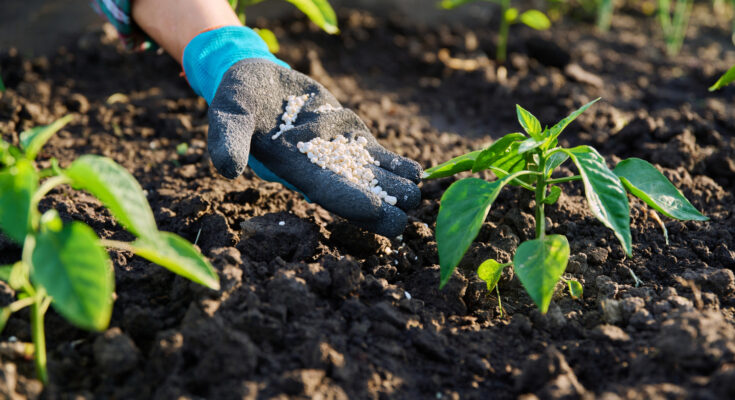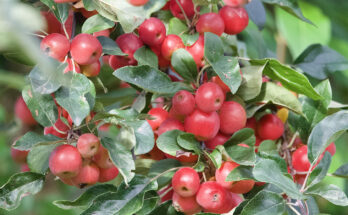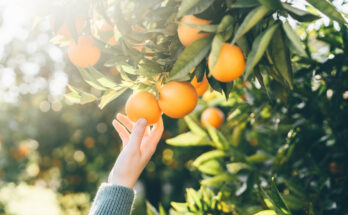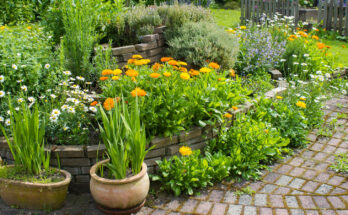10 Best Flowers To Plant To Help Mask That Gross Fertilizer Smell
Working with garden fertilizer is a double-edged sword. It can be a great tool for helping your garden thrive, but that comes at the price of a terrible scent. The same can apply to other gardening material, like mulch or compost. Regardless of the positive benefits they bring to your property, the rotten, manure-like odor of these piles can make you think twice about using them. But there’s no need to let a bit of stinkiness come between you and a perfect garden; if the scent of fertilizer or mulch is becoming too much to bear, try masking it with some sweet-smelling flowers.
Plenty of flowers have a nice perfume, but in order to combat the pungent fragrance of fertilizer and the like, you’ll need an equally intense-smelling plant. Additionally, it’s good to find aromatic flowers in a variety of sizes so you can use the right bloom to block different sources of sour scents. Whether you’re trying to cover up stinky mulch or create a barrier between your patio and the backyard trash can, prepare to stock up on flowering plants jasmine, lavender, hyacinth, and more.
Camellia
The vast, soft petals of camellias are a common sight throughout the southern US, where they grow happily in zones 7 to 9. Best planted in partial shade and well-draining soil, camellias don’t require much maintenance to thrive. The flowers bloom in the winter, and their glossy evergreen leaves can keep your garden looking fresh and vibrant all year long. Not every type of camellia has a fragrance intense enough to create an aromatic buffer zone, but ones that do, like camellia japonica, are sure to fill your garden with a captivating scent similar to rose.
Lavender
The popular, pungent smell of lavender (Lavandula) makes it an obvious choice for masking less pleasant aromas. Lavender’s scent is especially popular in aromatherapy, where it’s used to help folks relax and unwind. In the garden, lavender can emit its fragrance to simultaneously surround you with good odors and protect you from bad ones, which makes it great as a border plant next to compost heaps or garbage bins. Hardy in zones 5 to 9, lavender is a resilient, easy-to-grow flower that thrives in hot, dry conditions. For lavender with the most intense smell, look for Lavandula angustifolia.
Viburnum
Flowers in the viburnum genus tend to have rounded clusters of tiny petals available in a range of colors. Some varieties even emit aromas strong enough to overpower compost, decaying mulch, and even nearby manure. For example, Koreanspice viburnum (Viburnum carlesii) has an intense fragrance that’s equal parts sweet and spicy. Or, if you prefer super sweet scents, pick up a birkwood viburnum (Viburnum x burkwoodii). Viburnums can be grown easily in zones 2 through 9. In general, they enjoy lots of sun, moist soil, and weekly waterings.
Gardenia
Another flowering shrub that can easily hide both the visual and olfactory results of smelly garden activities is gardenia. Almost all gardenia cultivars emit a powerful fresh, floral perfume that can encapsulate an entire yard. These luscious white flowers can be grown throughout hardiness zones 6 to 11. They require rich soil and lots of sun, but they don’t do well in dry conditions. To get the most out of this grand shrub, make sure you know the best spot in your garden to plant gardenia.
Jasmine
There are several varieties of heavenly scented jasmine (Jasminum), such as common jasmine (Jasminum officinale) and Arabian jasmine (Jasminum sambac). It’s hardy in zones 7 to 10, where it enjoys moist soil and full sun. The small white blooms have a sweet scent, with notes of fruit or spice depending on the species. You can find jasmine as either a shrub or a vine, giving you lots of flexibility when it comes to placement. Strategically plant jasmine shrubs for localized odor neutralization, or let a jasmine vine climb over a pagoda to drape a patio in its inviting aroma.
Lilacs
Syringa vulgaris, also known as the common lilac bush, is prized for its dense, sweet scent capable of blanketing large swaths of outdoor space. Flowering in a range of beautiful purple and blue shades through zones 3 to 7 or 8, these shrubs do best in full sun and well-drained soil. Some of the most fragrant lilac varieties include ‘Yankee Doodle’ and ‘Primrose.’ Once established, lilacs require minimal care and are suited for planting near areas where their powerful floral aroma will have the biggest impact, like compost zones or driveways.
Sweet alyssum
For a delightfully perfumed ground cover that thrives in zones 5 to 9, try planting some sweet alyssum (Lobularia maritima). These delicate blossoms ask for sandy or loamy soil, a bit of shade, and plenty of water. In return, they offer a gentle, honeyed fragrance that can soften the pungency of any nearby sour scents. Sweet alyssum can grow and spread into small spaces between bigger plants, making it perfect for blanketing fertilizer that would otherwise be hard to reach. Along with covering up bad odors, this ground cover plant can also smother weeds in your garden.
Hyacinth
Hyacinth (Hyacinthus orientalis) is an olfactory powerhouse in USDA zones 4 through 8 that releases a bold, fresh, floral fragrance that can dominate even the strongest odors from fertilized flower beds or nearby compost heaps. The flower’s big aroma comes in a small package; hyacinths only grow to be a foot or so tall, making them perfect for lining paths for a sweet-smelling stroll straight to your door or patio. After establishing hyacinths in your garden with rich soil and plenty of water, these plants just need plenty of sun to keep growing strong.
California rose
There are dozens of rose varieties that will make your garden smell amazing, but the California rose (Rosa californica) is particularly aromatic. These stunning pink blooms have a strong floral scent that’s reminiscent of raspberries, and should have no issue lessening the impact of whatever foul odors are lurking around your property. Despite their delicate appearance, California roses are tolerant of dry conditions and hardy throughout zones 6 to 9. Still, for the best results, make sure your flowers get a bit of shade each day and are planted in moist soil.
Honeysuckle
The Lonicera genus, or honeysuckle, is a fast-growing group of vines with an intoxicating aroma that easily cloaks the scent of decaying mulch or compost. Honeysuckle thrives in zones 4 to 9, and is ideal for covering fences, trellises, or unsightly garden corners. Some species of honeysuckle are invasive, so be sure to pick up an easy-to-wrangle variety like common honeysuckle (Lonicera periclymenum). In terms of care, provide honeysuckle with partial shade, rich soil, and plenty of water, and it will douse your yard with syrupy notes of honey, citrus, berries, and orange blossoms.



